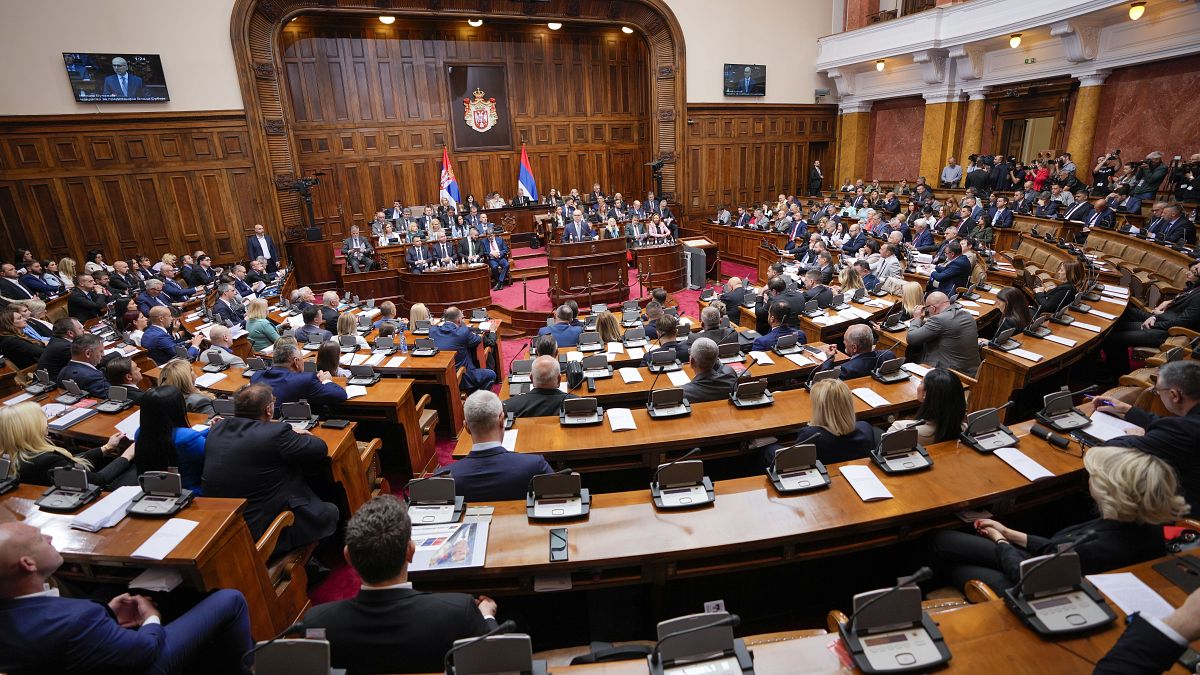Denver, CO
A day at Denver’s Valdez Elementary with 2 newly arrived migrant students

Fourth graders streamed one at a time through the playground door at Denver’s Valdez Elementary, a snaking jumble of energy and untied shoelaces.
Most bounded up the stairs to their classrooms. Only a few stopped to give a quick side hug to the staff member who was squinting in the sun and holding the door. Two of the huggers were Jesus and Leiker, who arrived in Denver from Venezuela a few months ago.
The boys, ages 9 and 10, are among the more than 38,000 migrants who have come to Denver in the past year after fleeing political and economic crises in their home countries.
Some of the new arrivals are families with children like Jesus and Leiker. Denver Public Schools has enrolled more than 3,200 of these young people since the start of the school year.
A majority arrived after the October cutoff date that determines how much per-student funding DPS gets from the state, creating a financial shortfall for the state’s largest district and causing schools to scramble for resources.
But not all schools. The new students are concentrated in a couple dozen of DPS’ more than 200 schools, which the district has been calling hotspots. The main reason is because the schools offer specialized instruction in both English and Spanish.
Valdez, also known as Escuela Valdez, has a longstanding dual language program. It’s also right up the street from a city-run shelter inside a Quality Inn, which Principal Jessica Buckley said everyone simply calls “The Quality.” Valdez, which had about 400 students last year, has welcomed more than 100 new students in the past few months.
Jesus and Leiker met at The Quality, where both of their families were staying, and became fast friends. They say they are like brothers: “Somos como hermanos.”
This is what one school day looked like recently for Jesus and Leiker, whose last names Chalkbeat is withholding to protect their identities as they navigate life in a new country.
Read the full report from our partners at Chalkbeat Colorado.
Chalkbeat is a nonprofit news site covering educational change in public schools.

Denver, CO
Hail pounds north Denver and suburbs with another round possible Friday

Watch CBS News
Be the first to know
Get browser notifications for breaking news, live events, and exclusive reporting.
Denver, CO
Broncos Rookie Draft Pick Suffers OTA Injury, Will Miss Time

Denver Broncos rookie running back Audric Estimé left early during last Thursday’s OTA practice. One week later, Estimé was absent again from practice.
Although head coach Sean Payton is stubbornly reticent to share any information whatsoever about player injuries, we learned that Estimé has a knee injury, has undergone a procedure, and will be absent from the remainder of the Broncos’ offseason training program.
“No, and I’ll just be honest with Audric,” Payton said on Thursday. “We went ahead and had a PRP [injection]. We did a small scope procedure, just to make sure everything is clean. It is. He’ll be available at the start of training camp. So we won’t see him working through the rest of these OTAs, but on the conservative side, he’s going to be just fine. It was all good news. He’ll stay in rehab, but he’ll be full go at the start of training camp.”
What happens next on the Broncos? Don’t miss out on any news and analysis! Take a second, sign up for our free newsletter, and get breaking Broncos news delivered to your inbox daily!
PRP is a plasma-rich platelet injection. The treatment can help strengthen and fast-track a player’s recovery from injury.
It’s good to hear that Estimé is expected to be good to go for training camp, which won’t start until the end of July. That gives him time to recover.
The 5-foot-11, 233-pound Estimé is coming off one heck of a final season at Notre Dame. He rushed for 1,341 yards and 18 touchdowns with 17 receptions for 142 receiving yards. The big bruiser averaged 6.4 yard per attempt on the ground.
Estimé joins a Broncos running back room well balanced with a veteran presence and young, high-upside runners. Javonte Williams projects as the Broncos’ RB1 entering 2024, and in a contract year, a big season could be on tap for the former second-round draft pick.
Williams is complemented by fellow veterans Samaje Perine, also a bigger, physical back, and Tyler Badie. Behind the trio of vets are Estimé and a pair of former undrafted players in Jaleel McLaughlin and rookie Blake Watson.
If Estimé’s recovery stays on schedule, the Broncos will be able to hit the preseason with a full stable of running backs, each of whom offers a different skill set and value. Here’s to hoping Estimé doesn’t suffer any setbacks.
We also learned on Thursday that second-year cornerback Riley Moss is dealing with a back ‘spasms,’ according to Payton. Moss isn’t expected to participate in Monday’s practice either, but the injury isn’t considered serious.
Follow Mile High Huddle on X and Facebook and subscribe on YouTube for daily Broncos live-stream podcasts!
Denver, CO
Canadian energy-storage company chooses Denver as U.S. headquarters

Canadian company Hydrostor, which specializes in storing energy from renewable sources for later use, is opening its U.S. headquarters in downtown Denver.
The Toronto-based business announced the decision Wednesday. Tom Duckett, Hydrostor’s chief development officer, said the company plans to hire 20 more people this year, boosting the Denver staff to about 30.
The company employs roughly 100 people worldwide.
Hydrostor chose Denver as its U.S. base in part because of its industrial activity. Duckett said the company’s technology employs a lot of mining and conventional fossil fuel construction techniques while using power from renewable sources.
Mining and oil and gas have long been mainstays of the state’s economy. Colorado also has a growing renewable energy industry.
Duckett said the company’s strategy is to look at markets that have a growing renewable energy sector.
Denver’s other advantages are its central location and talent pool, Duckett said. Colorado is close to California, where Hydrostor is preparing to build a 500-megawatt energy-storage plant in Kern County, and to potential markets in Arizona and Nevada.
Hydrostor operates a plant in Ontario and expects to start construction next year of one in New South Wales in Australia. The company said it has another 15 projects in the pipeline. Duckett said a plant is planned in Colorado.
The ability to store excess power generated from wind and solar plants to use when the wind isn’t blowing and the sun isn’t shining is considered essential to expanding the use of renewables and reducing reliance on fossil fuels. The basic technology used to store compressed air underground as way to tap the energy later has been around for about 40 years.
However, unlike some models, Hydrostor’s proprietary technology doesn’t use fossil fuels in the process, Duckett said. The company said its method, which involves pumping water to store compressed air underground and water pressure to release it, doesn’t create emissions.
And unlike batteries that hold energy from renewable sources, Hydrostor’s plant has a lifespan of 50 years and can provide up to eight hours of electricity, Duckett said. The process is dubbed “long-duration” energy storage.
A 2023 paper written by staff members at the National Renewable Energy Laboratory in Golden said closed-loop pumped storage hydropower systems have the lowest potential of adding to the problem of climate change when looking at the full impacts of material and construction.
Hydrostor uses electricity from renewable sources to power compressors at a plant, producing heated compressed air that is stored above ground. A video on the company’s website shows how cooled compressed air is then pushed underground into a water-filled rock cavern. The air displaces the water, which is lifted to a reservoir on the surface.
When energy is needed, the process is reversed. Using gravity, the water on the surface flows into the cavern, pushing the air above ground. The air is reheated and spins turbines to generate electricity.
Duckett said the company uses existing technology, equipment and supply chains. “We just put it together in another way to have it be a clean, long-duration energy solution.”
-

 News1 week ago
News1 week agoThe states where abortion is on the ballot in November : Consider This from NPR
-

 News1 week ago
News1 week agoRead Prosecutors’ Filing on Mar-a-Lago Evidence in Trump Documents Case
-

 Politics1 week ago
Politics1 week agoMichael Cohen swore he had nothing derogatory on Trump, his ex-lawyer says – another lie – as testimony ends
-

 Politics1 week ago
Politics1 week agoAnti-Israel agitators interrupt Blinken Senate testimony, hauled out by Capitol police
-

 World1 week ago
World1 week agoSerbian parliamentary minnow pushes for 'Russian law' equivalent
-

 World1 week ago
World1 week agoWho is Ali Bagheri Kani, Iran’s acting foreign minister?
-
Technology1 week ago
Microsoft’s new Windows Copilot Runtime aims to win over AI developers
-

 News1 week ago
News1 week agoBuy-now, pay-later returns and disputes are about to get federal oversight





















/cdn.vox-cdn.com/uploads/chorus_asset/file/25458338/DSC00620.JPG)